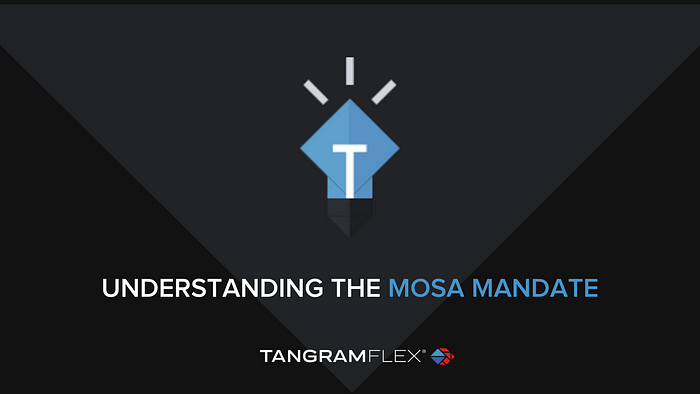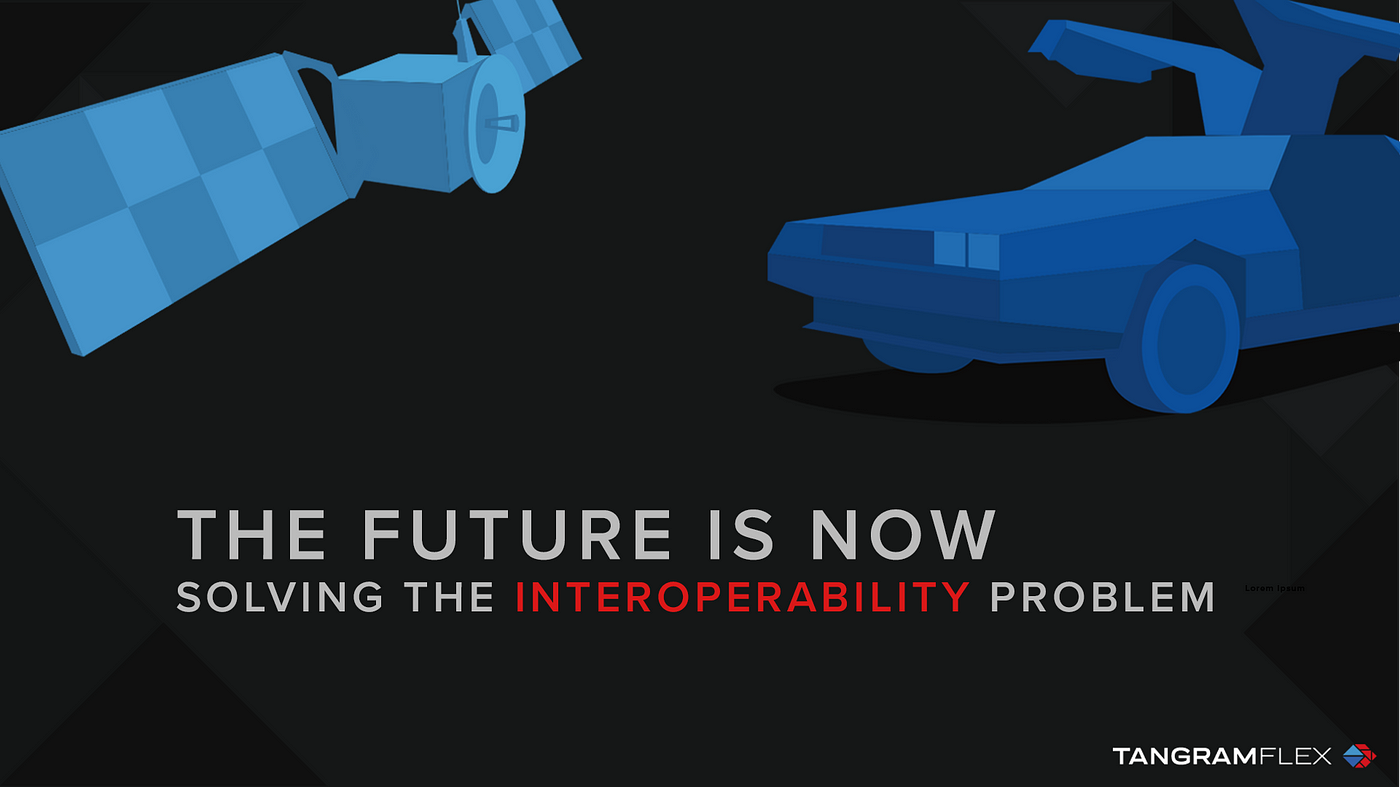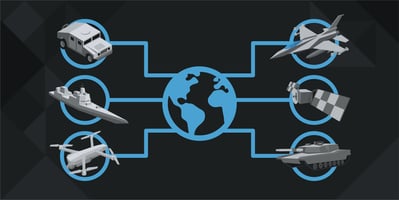Contributed by Liz Grauel, marketing leader at Tangram Flex. The world I was promised by cartoons...
Understanding the MOSA Mandate
As 2022 inches closer we are beginning to hear more about the DoD’s MOSA mandate. In this post, Liz Grauel, marketing leader at Tangram Flex, defines MOSA, the origins of the MOSA mandate, and what the MOSA mandate means for doing business in the defense industry today.

MOSA 101
Open approaches to system architectures and design power some of the technologies we employ in our daily lives. Google APIs are an excellent example; in fact, most of us probably don’t even realize how many Google services we use. Google APIs are open software architectures used by Google to connect their services together, and they are available to third-party app developers as a standard, easy, fast way to use Google technology in their own products — without divulging any proprietary information about what powers the Google service.
MOSA, which stands for Modular Open Systems Approach, is in essence an application of this same concept on a larger scale. While engineering teams in defense and non-defense industries alike have been embracing open architectures for decades, a Modular Open Systems Approach encompasses both technical architecture and business practice.
MOSA [moh-zah]: Modular Open Systems Approach; a business and technical strategy that promote the use of open architectures and standards for building, updating, and maintaining systems
MOSA is a way of conducting the business of building systems and components. On the technical front, engineering teams are tasked with building modular systems with open architectures and standards.
Business rules are what make MOSA a more novel strategy. For a truly open approach, every organization that builds a system or contributes components to it needs to make sure that every piece of the system can communicate with the others. This happens through interfaces. Think of this like a Google API: the system and each of its components should have a communication layer around it so other systems and components can send or receive information from it. When each organization documents and shares information about its interfaces, multiple parties can easily modify, integrate, and share data between systems.
MOSA & DoD
MOSA has been woven into the defense innovation conversation for quite some time and has been moving toward centerstage in recent years. The National Defense Acquisition Act (NDAA) of 2017 included a section that required MOSA to be addressed in the requirements and acquisition processes for new major defense acquisition programs. The 2018 National Defense Strategy reiterated the urgency of adopting MOSA and prioritizing speed of delivery, continuous adaptation, and ongoing, frequent modular upgrades in defense systems. The DoD has been clear in its expectations: system design and acquisition strategies need to follow approaches that lead to the development of affordable, adaptable systems.

Today’s world of unprecedented speed and advancements in technology makes it difficult and even foolish to argue against the need for adopting a new approach, however, there are practical barriers to making the shift. Legacy systems, for example, still have a lot of life left in them, but by and large, were not built modularly. Moreover, many of the components that are already in use are proprietary and built with standards that were never intended to be shared openly. While most of us agree that we need to modernize our approach to modernizing our systems, we also know that we don’t have the luxury of rebuilding everything we already use. A needling question arises: how do we embrace MOSA without starting from scratch?
The MOSA Mandate
Now is the time to truly understand the conceptual underpinnings of MOSA and work to address and overcome challenges to its adoption in defense systems. Section 804 of the 2021 NDAA devotes 7 full pages mandating the implementation of Modular Open System Approaches. In brief, what has become colloquially termed “the MOSA Mandate” gives the following directives:
- Characterize the modularity of every weapons system — this means identifying, defining, and documenting system models and architectures so suppliers will know where to integrate their components
- Define software interfaces between systems and components — similar to the concept of a Google API, every system and component will need to have an interface it uses to send and receive data from other components
- Deliver the interfaces and associated documentation to a government repository
Although formal regulations and guidance for meeting the expectations of the NDAA are not expected until January of 2022, these key attributes of the MOSA mandate are likely to impact every program of record, even those maintaining legacy systems.
Knowledge is Power
Breaking down the MOSA Mandate gives us a solid, if complex, foundation for setting expectations of the regulations that will shape defense innovation for the decades to come. In a “simple” statement, we understand it as follows: the 2021 NDAA and forthcoming guidance will require program officers to identify, define, and document every model, require interfaces for systems and the components they use and deliver these modular system interfaces and associated documentation to a specific repository.
Taking on MOSA is no easy feat, and a clear path to adoption doesn’t yet exist. As a whole, we are looking at an industrial change on the tier of evolution, and it is likely to bring both obstacles and opportunities we cannot yet predict. Embracing MOSA requires a comprehensive change in our existing business and system engineering practices, but it is a critical paradigm shift for truly achieving interoperability, rapid modernization, and the ability to serve our warfighters, citizens, and allies.

This is hard, and we are a society that does hard things. Becoming familiar with the key components of MOSA is the first step towards joining the conversation and building shared understanding and partnerships that will make us successful in this transition. Some of our previous blog posts touch on topics important to MOSA:
- Interoperability and Standards
- Component Interfaces
- Modularity in Software Systems
- Modern Approaches to System Architectures
Though there is not yet a straightforward, one-size-fits-all approach to innovation and MOSA, we are not without avenues to solutions. This conversation will continue to develop and grow and Tangram Flex is here to collaborate in this space.

Tangram Flex simplifies software integration for mission-critical defense systems. Every system is unique, but the mission is clear: the people on the ground need dependable, adaptable equipment to get the job done. At Tangram Flex, we understand the challenges of security, speed, and safety. Our team combines engineering expertise with our Component Software Integration Platform (CSIP), Tangram Pro™, to arm engineers with customized toolkits for embracing a holistic approach to delivering modular, open systems. Get in touch: hello@tangramflex.com






